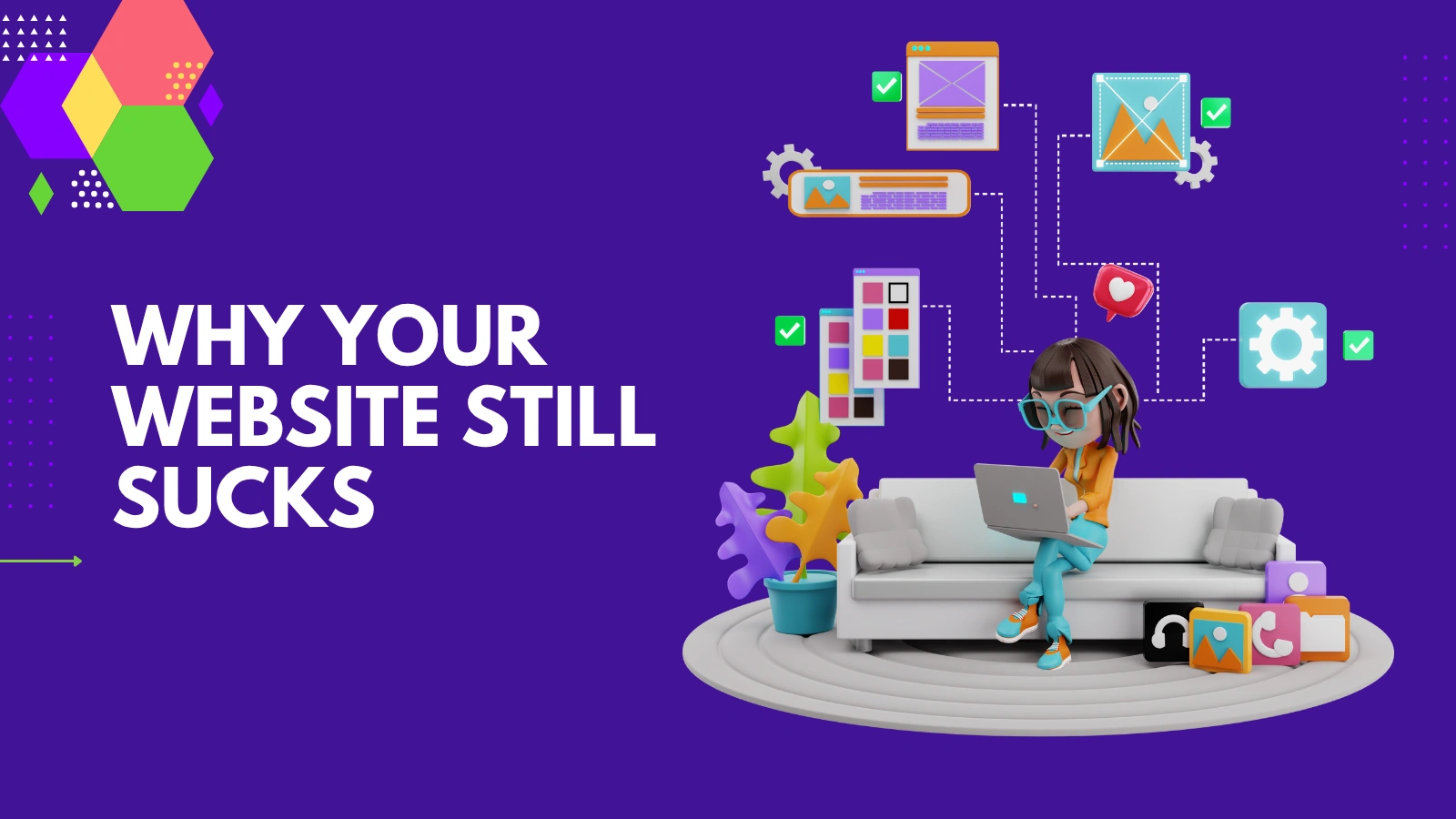94% of first impressions online are design-related — and yet, most websites still look like they were slapped together in 2012. Slow load times, awkward navigation, and generic templates continue to plague even well-funded startups. Why? Because too many founders prioritize launch speed over experience, and DIY website builders often leave more damage than value. What if your website isn’t just ugly — it’s actively losing you trust, leads, and revenue?

Here’s what high-growth startups are doing differently — and why it’s working.
Your Website Isn’t the Problem — You Are
Founders obsess over product design but treat their websites like an afterthought. A logo slapped on a template. Some clever copy buried in clunky menus. A contact form that may or may not work. This isn’t web presence — it’s digital malpractice. Worse still, it sends one brutal signal to visitors: “We don’t care enough to make this easy for you.” The truth? Most startups don’t suffer from bad products — they suffer from bad presentation.
Without a clear structure, even the smartest content gets ignored. Visitors bounce not because they’re uninterested, but because they’re confused. Call-to-actions hide behind clutter. Mobile versions glitch out. SEO is an afterthought. And that “About Us” page? Still filled with vague clichés about “innovation” and “customer-first thinking.”
To make matters worse, the typical website process is broken. Founders try to bootstrap with drag-and-drop tools or cheap freelancers who vanish after delivery. That’s why more startups are hiring a Webflow Development Agency to build clean, responsive, conversion-focused sites that scale with their brand. No bloated code. No guessing. Just smart design and real results.
Your Users Don’t Care About Features, They Care About Flow
Most startups make the same mistake: they design their site around themselves. Feature lists. Tech specs. Awards. It’s a shrine to the product. But users don’t care how impressive your backend is if they can’t understand what you solve for them in ten seconds or less. Flow — not features — determines whether they stay.
People navigate intuitively. They expect clarity, speed, and relevance. If your homepage doesn’t hook attention in two scrolls, they’re gone. If your mobile site takes four seconds to load, they won’t wait. Your product may be revolutionary, but your UX is prehistoric.
That’s why top-performing sites obsess over journey mapping. They cut ruthlessly. They simplify. They test constantly. It’s not about making the site prettier — it’s about making it easier to say “yes.”
Templates Are Killing Your Brand
Look around: how many SaaS sites look identical? Hero image, bold text, three icons, testimonial slider. It’s formulaic — and completely forgettable. When everyone follows the same playbook, your only differentiator becomes your price. That’s a death sentence for startups trying to build premium positioning.
Templates can be helpful to validate ideas quickly, but relying on them long-term is like trying to build a skyscraper on rented land. Your brand becomes interchangeable, invisible. People remember stories, not stock layouts.
A custom-built website rooted in your actual brand DNA communicates credibility, trust, and intention. It says, “We know who we are — and we’re worth your time.” That’s not just aesthetics; that’s strategy.
Templates give you speed but rob you of soul. They strip away uniqueness and flatten emotional connection. In a crowded market, sameness is a silent killer — differentiation starts with bold, intentional design choices that reflect your true identity. Every pixel should serve a purpose — not just fill a space.
DIY Websites Cost More Than You Think
The appeal of DIY builders is obvious: cheap, fast, and “good enough.” But “good enough” is where conversions go to die. Every hour you spend fiddling with widgets is an hour not spent refining your pitch, talking to users, or shipping code. That’s not lean — that’s lost opportunity.
Moreover, most DIY sites are slow, SEO-poor, and nearly impossible to scale. Need localization? Stripe integration? CMS logic? Good luck. The upfront “savings” quickly vanish once you factor in rewrites, redesigns, and missed business.
Startup capital is precious. So is trust. Cutting corners with your website signals that you’re willing to compromise elsewhere. Users notice. Investors notice. Hell, even Google notices.
What Smart Startups Are Doing Instead
Smart startups treat their website like their most valuable salesperson — because it is. It works 24/7. It never calls in sick. It pitches perfectly, every time. They don’t guess their way through design decisions — they hire experts, run experiments, and adapt relentlessly.
They use modern platforms like Webflow not just for visuals, but for velocity. Launch faster. Iterate cleaner. Own the code and the content. And when they don’t have time to build it themselves, they partner with people who do — designers, strategists, and developers who understand what growth really looks like.
The best sites aren’t just beautiful. They convert. They educate. They close. And most importantly, they respect the user’s time.
Join 25,000+ smart readers—don’t miss out!







